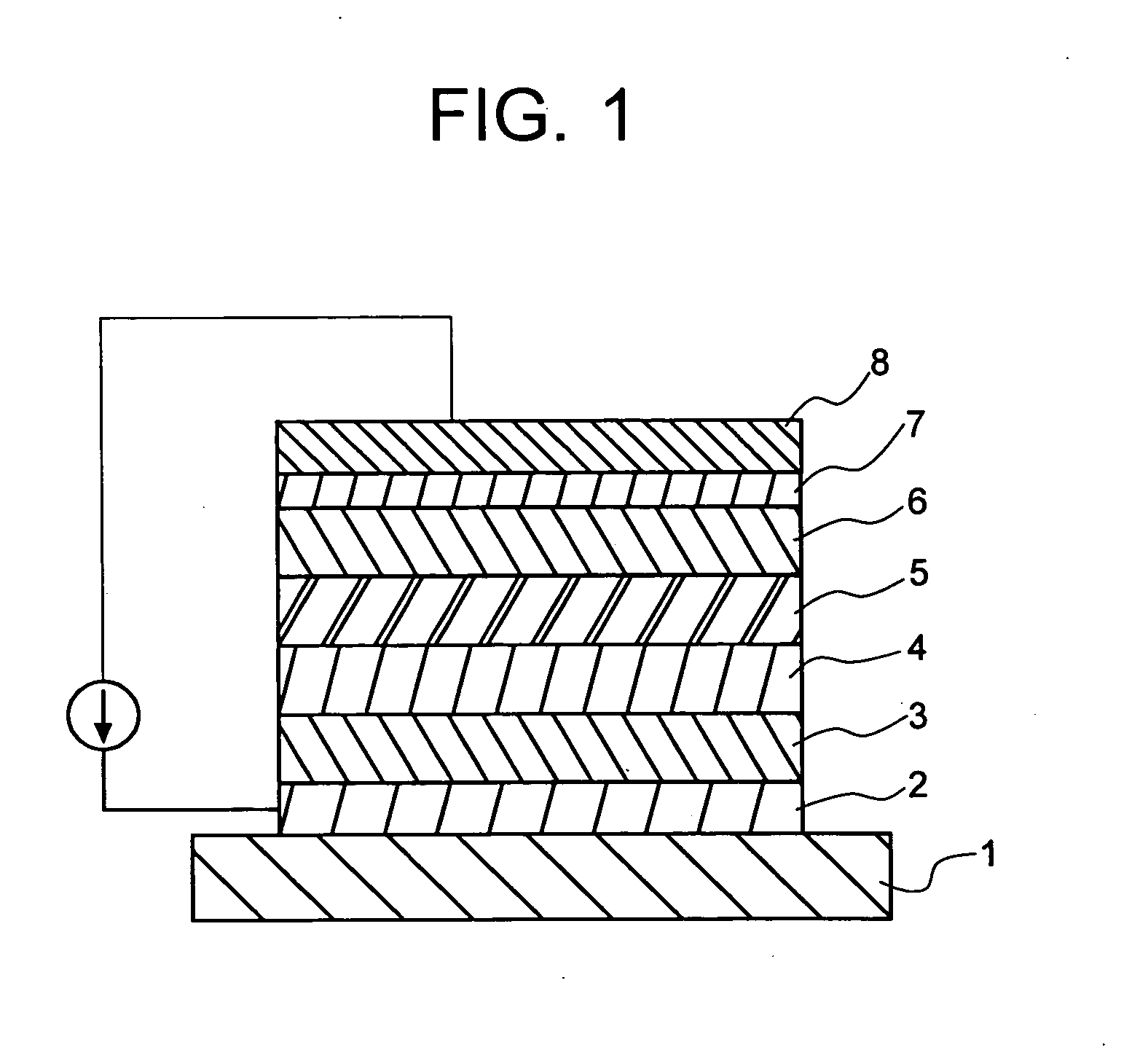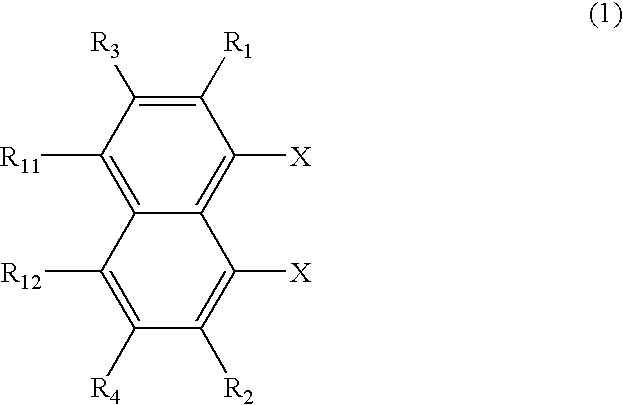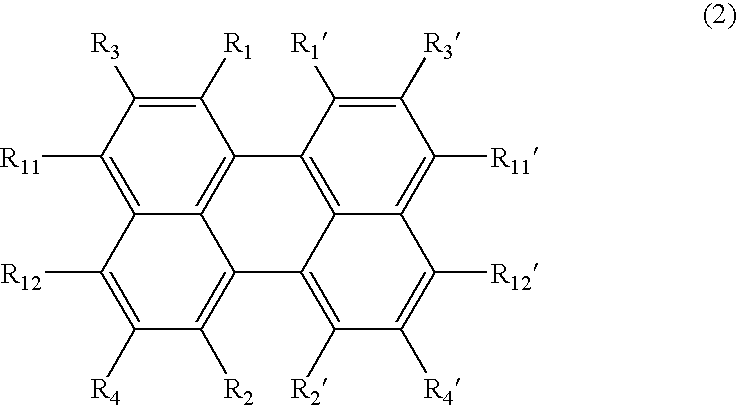Perylene derivative synthesis process, perylene derivative and organic EL device
a technology of perylene derivative and synthesis process, which is applied in the field of organic electroluminescent devices, can solve the problems of limiting the degree of freedom of compound design, low preparation efficiency, and low efficiency of prior art synthesis procedures
- Summary
- Abstract
- Description
- Claims
- Application Information
AI Technical Summary
Benefits of technology
Problems solved by technology
Method used
Image
Examples
first embodiment
the inventive synthesis process involves halogenating a 1,8-dihalogenated naphthalene derivative of the following formula (1), and subjecting it to coupling reaction for thereby synthesizing a perylene derivative of the following formula (2).
Referring to formula (1), R1 to R4, R11 and R12 each are a hydrogen atom, a straight, branched or cyclic alkyl radical which may be substituted, a straight, branched or cyclic alkoxy radical which may be substituted, a straight, branched or cyclic alkylthio radical which may be substituted, a straight, branched or cyclic alkenyl radical which may be substituted, a straight, branched or cyclic alkenyloxy radical which may be substituted, a straight, branched or cyclic alkenylthio radical which may be substituted, a substituted or unsubstituted aralkyl radical, a substituted or unsubstituted aralkyloxy radical, a substituted or unsubstituted aralkylthio radical, a substituted or unsubstituted aryl radical, a substituted or unsubstituted aryloxy r...
second embodiment
the inventive synthesis process involves using a 1,8-dihalogenated naphthalene derivative of formula (1) and a naphthyl-1,8-diboronic acid derivative of the following formula (7), and subjecting them to Suzuki coupling reaction for thereby synthesizing a perylene derivative of formula (2).
In formula (7), Z is a boronic acid derivative, and R1 to R4, R11 and R12 are as defined for R1 to R4, R11 and R12 in formula (1). As the boronic acid derivative represented by Z, boronic acid B(OH)2 is often used although derivatives having equivalent action are inclusive.
In Suzuki coupling reaction, the compounds of formulae (1) and (7) are treated in a solvent which inert to the reaction, in the presence of a base and a palladium catalyst, and at a temperature of room temperature to 125° C. for 10 minutes to 24 hours, obtaining a reaction product.
The solvent used herein is not critical, and examples thereof include aromatic hydrocarbons (e.g., benzene and toluene), ethers (e.g., tetrahydrof...
third embodiment
the invention is a combination of halogenation followed by coupling according to the first embodiment with coupling via boron derivative according to the second embodiment. That is, the third embodiment is a perylene derivative synthesis process involving using a naphthalene derivative of the following formula (13) and subjecting it to Suzuki coupling reaction for thereby synthesizing a desired perylene derivative.
X is Cl, Br or I, and Z is a boronic acid derivative. R1 to R4, R11 and R12 in formula (13) are as defined in formula (1). X and Z are the same as in the first and second embodiments, with their preferred examples being also the same. The same applies to formulae (14) and (15) below.
Also, a perylene derivative can be synthesized by using a fluoranthene derivative of the following formula (14), and subjecting it to Suzuki coupling reaction.
X is Cl, Br or I, and Z is a boronic acid derivative. R1 to R6, R21 and R22 in formula (14) are as defined in formula (3).
Furthe...
PUM
| Property | Measurement | Unit |
|---|---|---|
| voltage | aaaaa | aaaaa |
| electric field | aaaaa | aaaaa |
| luminescent | aaaaa | aaaaa |
Abstract
Description
Claims
Application Information
 Login to View More
Login to View More - R&D
- Intellectual Property
- Life Sciences
- Materials
- Tech Scout
- Unparalleled Data Quality
- Higher Quality Content
- 60% Fewer Hallucinations
Browse by: Latest US Patents, China's latest patents, Technical Efficacy Thesaurus, Application Domain, Technology Topic, Popular Technical Reports.
© 2025 PatSnap. All rights reserved.Legal|Privacy policy|Modern Slavery Act Transparency Statement|Sitemap|About US| Contact US: help@patsnap.com



